The term "non-linear working day" is becoming more and more popular. In this article, we tell you what it is and why it can be highly beneficial for employees and companies, always considering the challenges it represents for internal communication.
A modality that is in full development
The non-linear working day is a change that is happening. Both employees and organizations are experiencing the possibility of achieving their objectives from home, a remote office, a bar, or anywhere in the world.
The need to work Monday through Friday from 9 a.m. to 6 p.m., go out to lunch, and return home at the end of the day is practically becoming a thing of the past for certain types of activities. Technology, finance, and communication are leading this new trend.

The non-linear workday is being generated organically, which should get our attention.
Changing the rhythm
People have different rhythms. Some are more creative and productive early in the morning, while others are more creative and productive in the evening.
And that is what the non-linear workday is all about: establishing the work schedule in which each person best achieves their goals.

In addition, this new format also allows employees to organize their schedules so that they can not only work but also take care of their families and take time for physical activity or rest.
Undoubtedly, this implies a great responsibility, organizational power, and a great benefit to maintaining a balance between personal, family, and work life. On the other hand, it was found that the non-linear working day helps to prevent burnout, burnout, and stress.
Internal Communication and the Non-Linear Workday
Until a year ago, we were thinking about how internal communication could support our teams during their return to the office. However, this first wave of desire to return to the office dissipated as time went by.
According to a WeWork study, “1 out of 2 employees would prefer to go to the office three days a week or less, and, when they do go, they would prefer to stay there for 5 hours a day or less”.
Among employees, better work/life balance is the most important benefit. They also mentioned having greater control, less stress, more time to spend with family, and fewer travel expenses to and from the office.

This new modality represents a challenge from the Internal Communication areas: they must generate methodologies and channels that adapt to the new times.
In this sense, incorporating apps dedicated to internal communication and audiovisual media to generate proximity is part of the resources that dynamize internal communication in organizations.
Non-linear thinking
The non-linear working day, which is emerging almost organically, requires certain keys to achieve good performance:
- Organization: each collaborator must have excellent planning of work and free time. It is necessary to establish certain routines and prioritize the actions to complete to achieve the expected results in time and form.
- Responsibility: remote work that includes a non-linear working day requires a significant commitment from the collaborator.
- Work by objectives: far from complying with a schedule, the non-linear workday prioritizes the achievement of objectives regardless of how many hours and the times the employee performs their task.
- Flexibility: this point is very important since even though the employee does not follow a fixed schedule, they must be willing to coordinate work meetings within the traditional workday.
- Internal communication: essential for the whole team to be coordinated and informed. Fluid internal communication is a must-have. The new hybrid, remote and non-linear work formats require a solid and consolidated internal communication strategy.
Finally, the non-linear workday is, without a doubt, another benefit that organizations can accompany, strengthening the employer brand, generating greater team commitment, increasing employee branding, and improving productivity.

From Oxean, we accompany your organization in the planning and implementation of new forms of communication, establishing a strategy according to your business.




